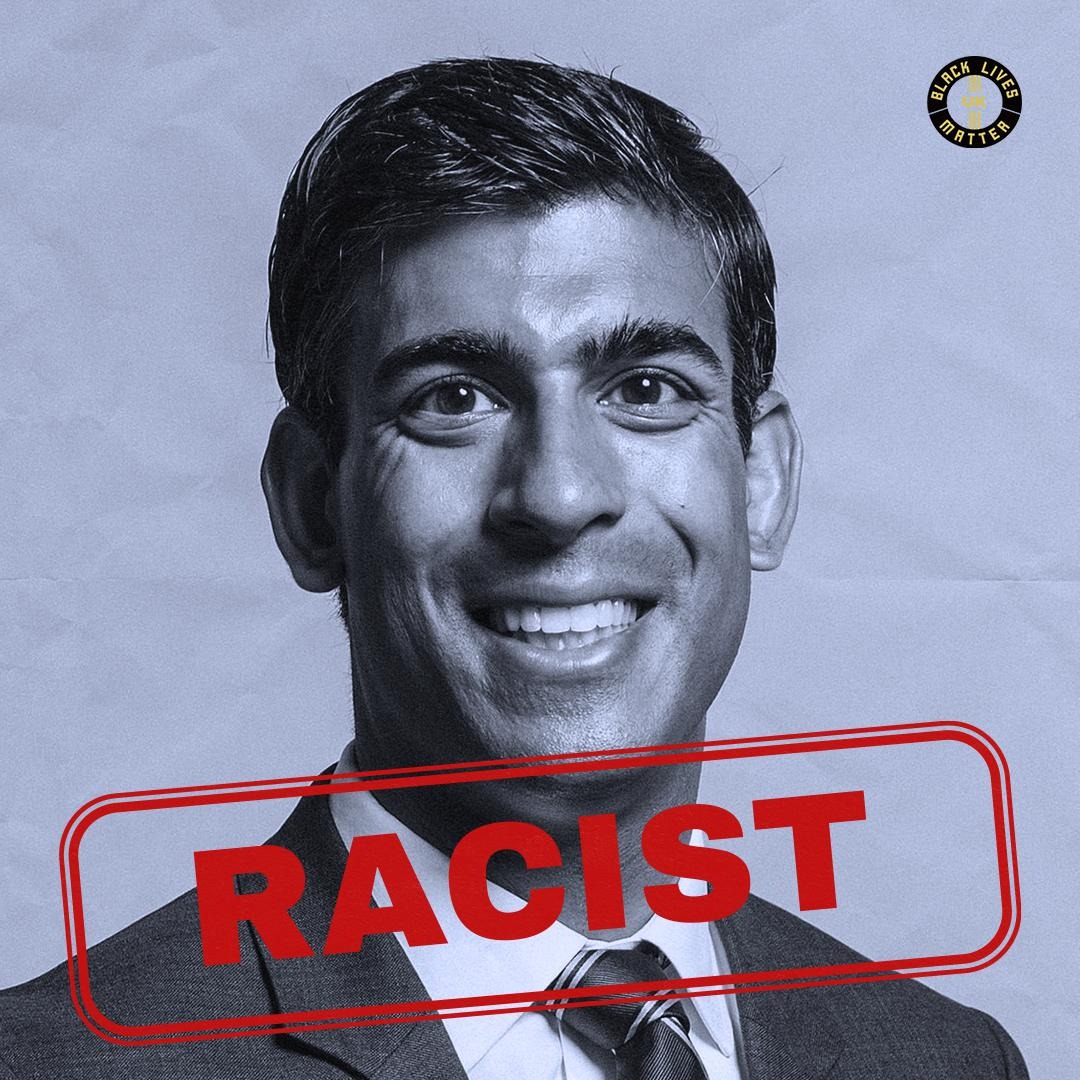By Dr Adam Elliott-Cooper, a founding director of BLMUK
Rishi Sunak’s ‘Illegal Migration’ Bill has, despite widespread opposition, become law. It has been described by Liberty as ‘desperately cruel’ and, according to Amnesty International, will cause ‘unspeakable damage to people and communities’. Yet, despite anti-immigrant rhetoric often being associated with bigotry, few have described this new anti-migrant legislation for what it is: racist. Even though this legislation lists the harms it will inflict on those who seek refuge, including unaccompanied children from Africa and Asia.
It may seem difficult, even counter-intuitive, to refer to legislation being championed by Britain’s first Prime Minister of Asian heritage as racist. As the Bill was passing through Parliament, Sunak was celebrating the ‘enormous contribution’ of 20th century Caribbean migrants to mark Windrush Day, while also speaking of the ‘sting’ of racist abuse he’d experienced growing up. Yet, Sunak’s rhetorical pivot, criticising interpersonal racism and celebrating multicultural Britain, while also passing racially discriminatory legislation, is only possible if we fail to understand institutional racism. That is when the normal functioning of an institution produces racist outcomes. For example: withholding welfare resources and entrenching poverty among communities seen as non-white such as the Windrush Generation.
When people migrate here, whether from Britain’s former colonies or through the asylum system, they face racist harassment, violence and discrimination. Historically, migrants have experienced informal colour-bars preventing them from accessing key services and work, and many experienced racial abuse similar to that described by our Prime Minister. This structural violence persists in many forms today. This is the institutional sting of British racism, brought to life through a series of immigration acts, intended to limit migration from Britain’s black and brown commonwealth subjects.
As David Olusogu helped bring to public attention, the 1962 Immigration Act was, on the surface, not racially discriminatory. However, according to the then Home Secretary Rab Butler, the “restrictive effect is intended to, and would, in fact, operate on coloured people almost exclusively”. This enabled the British government to simultaneously celebrate the contributions it’s colonial and commonwealth subjects make to the mother country and denounce bigotry while passing laws which were intended to institutionalise racism.
Britain’s imperial relationship with the formerly colonised world is, as we can see through its immigration legislation, one in which the normal and intended application of these powers, reproduces racism. We should perhaps then be unsurprised that over half a century later, Britain’s government repeat this now well-rehearsed drama. They denounce and deny overt racial bigotry, celebrate the contributions made by particular groups of commonwealth citizens while retrenching the policies which make racist violence the business-as-usual of Britain’s border regimes.
If institutional racism is understood as the ways that this country’s institutions produce racist outcomes by design of policies, legislation and more, then immigration policy has it down to a fine art. Not simply due to the ways it discriminates against black and brown migrants almost exclusively, but because of its insidious normality, a racism which is so routine and unexceptional, that even many of its most fierce critics fail to name it.
Originally published in The Voice as “Let’s call this ‘Illegal Migration’ Bill for what it is: Racist”

